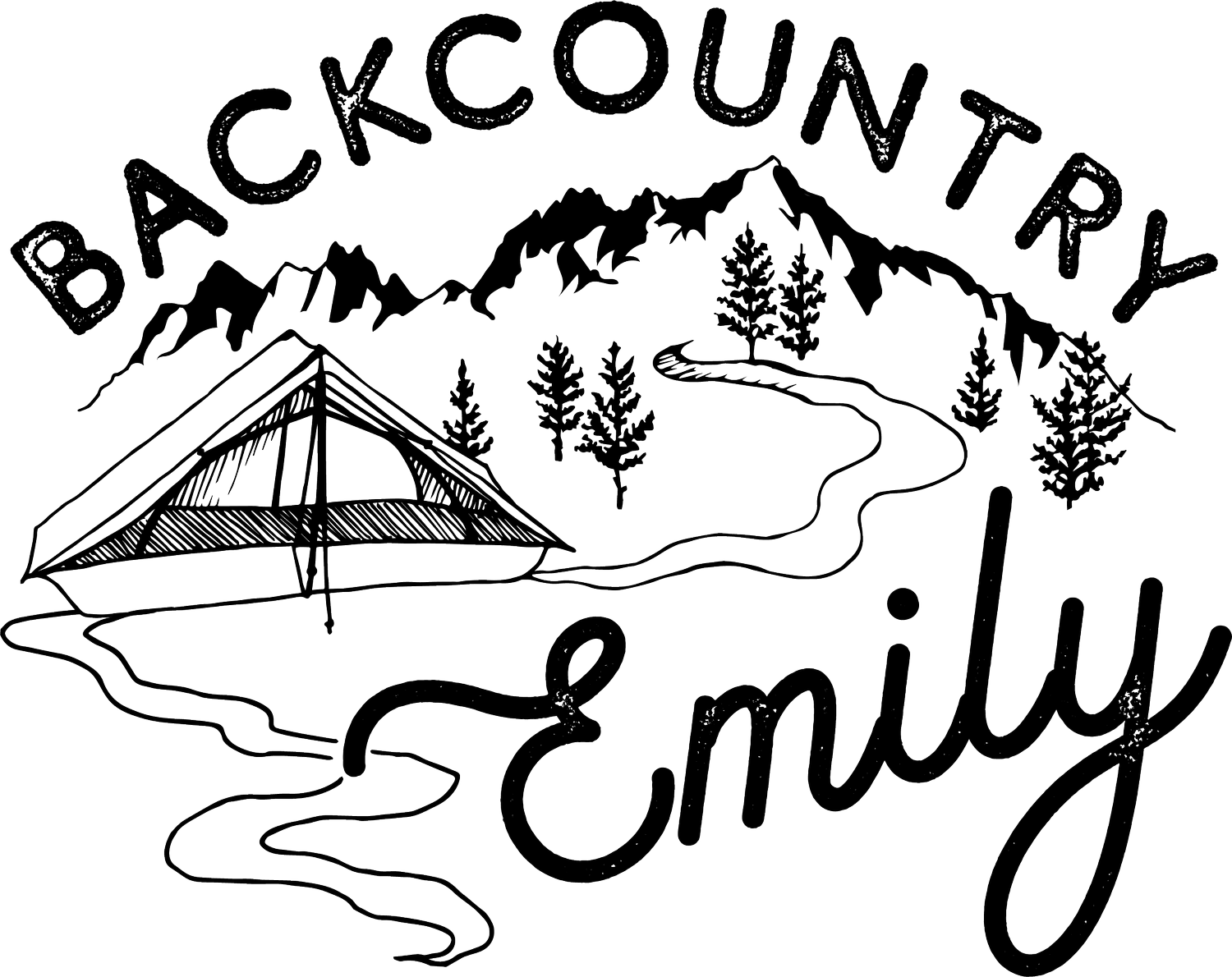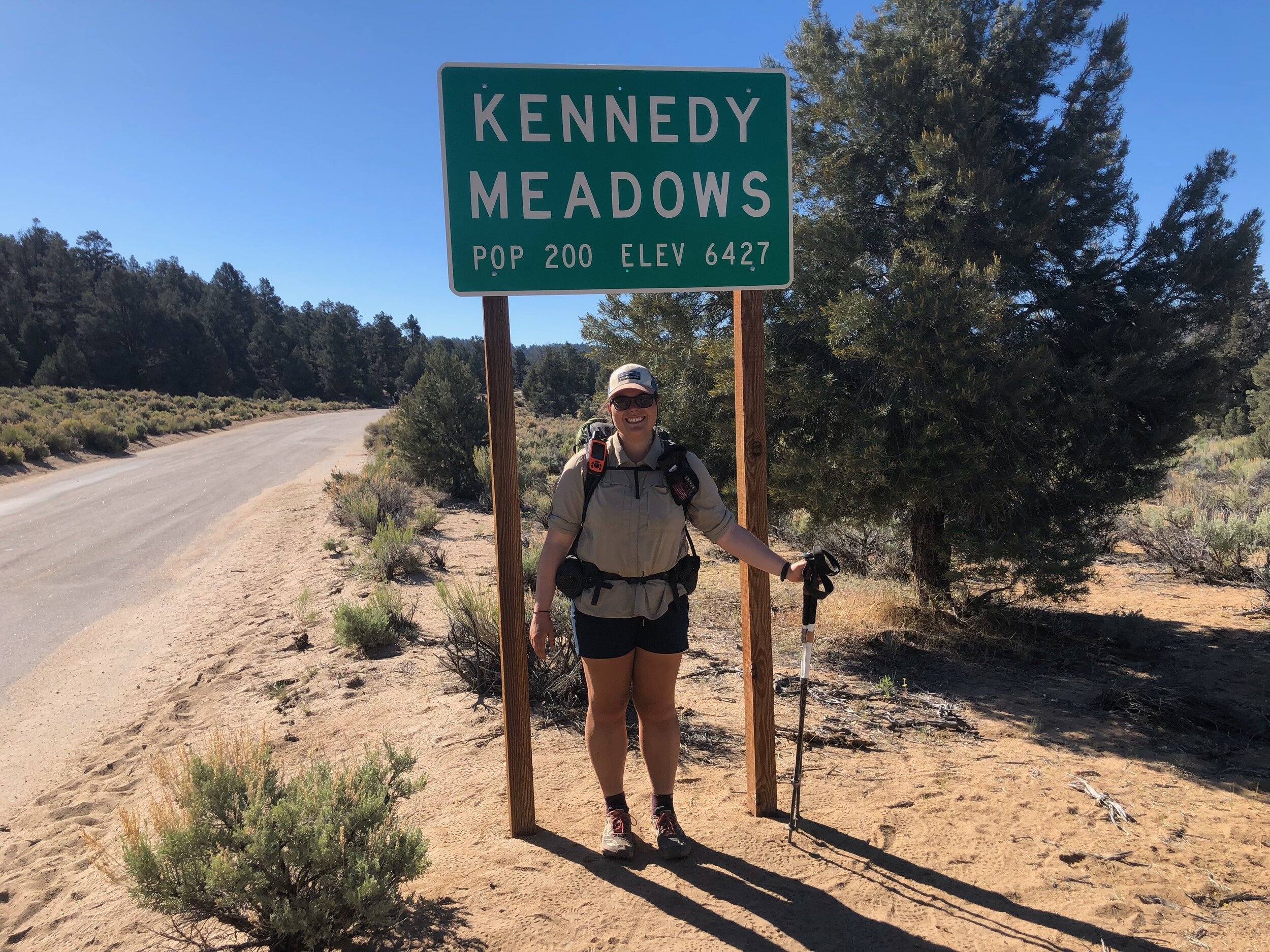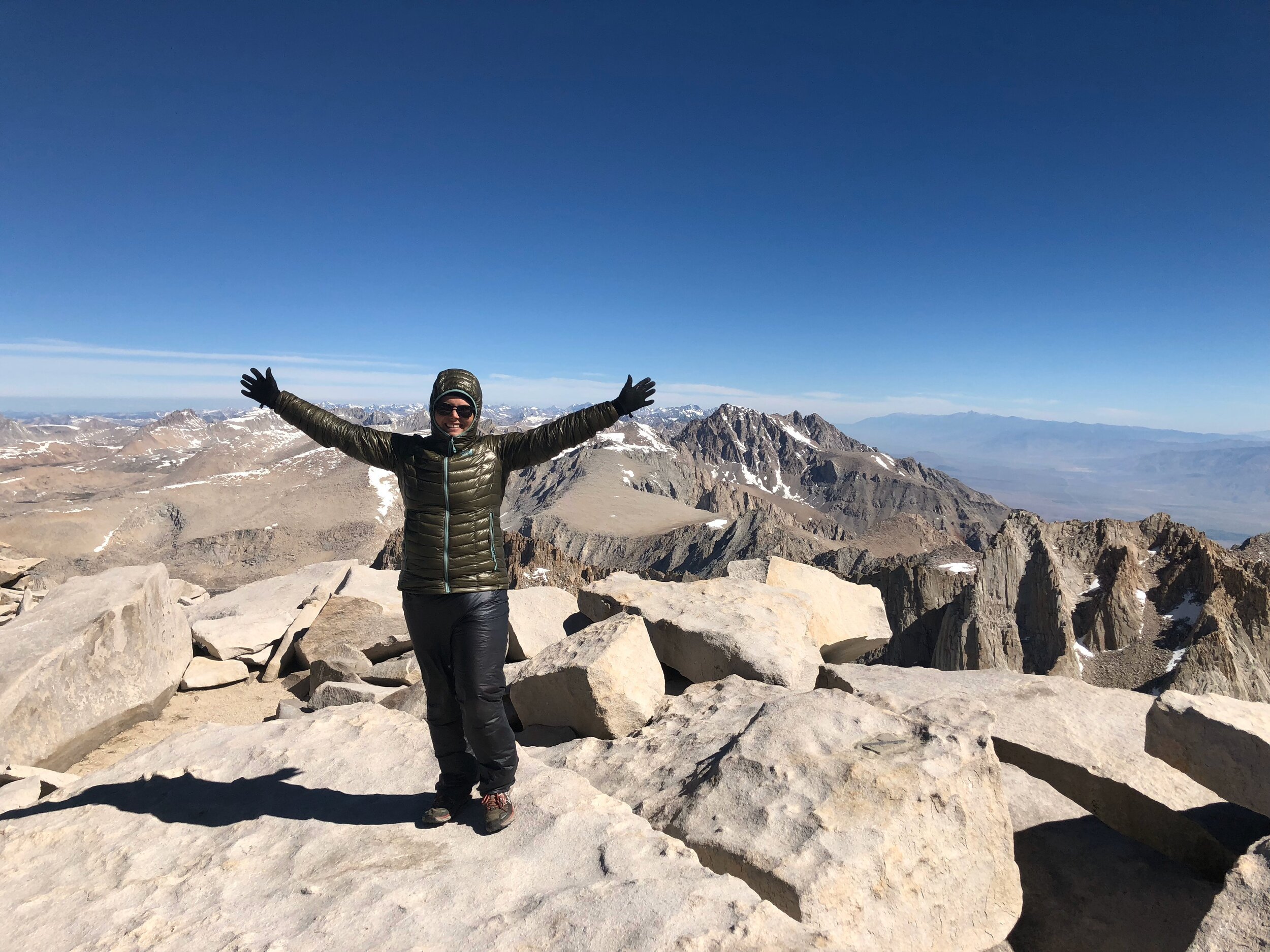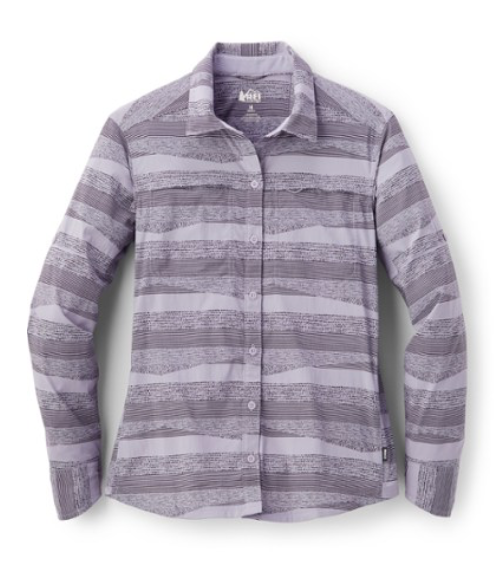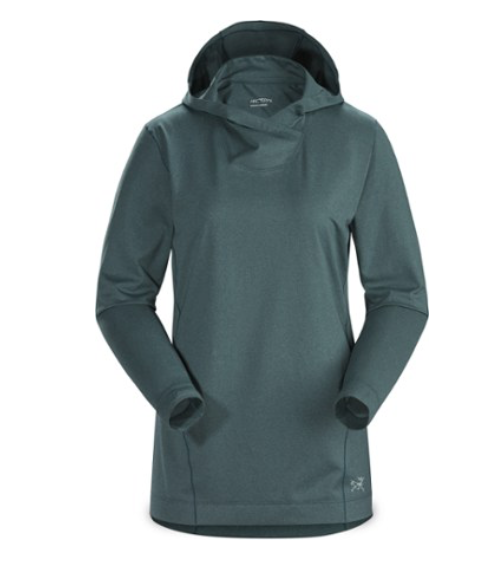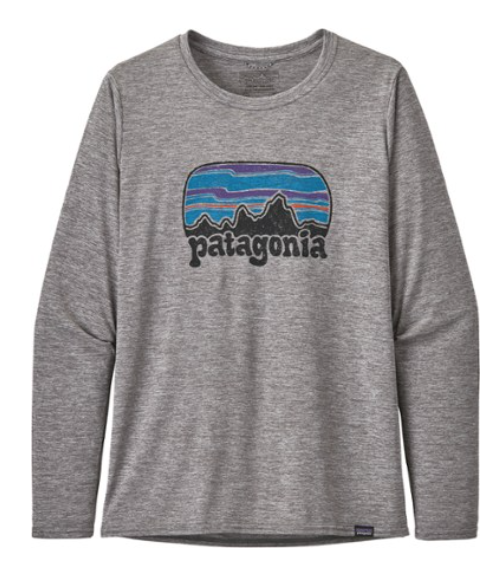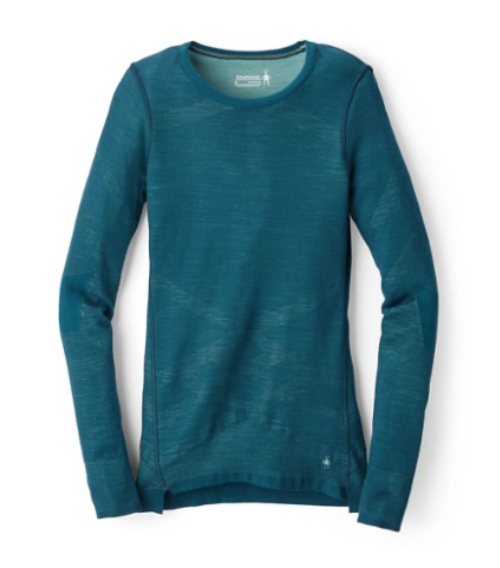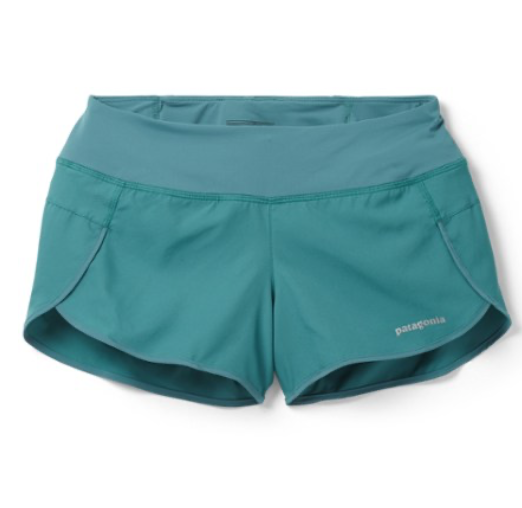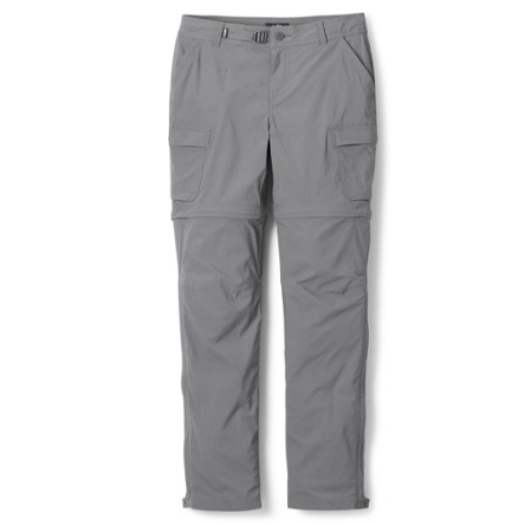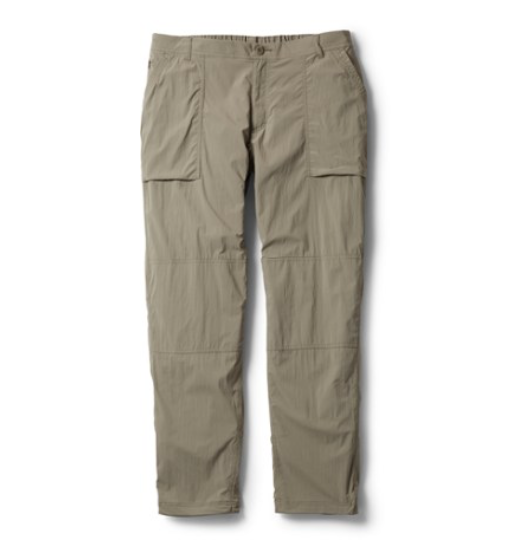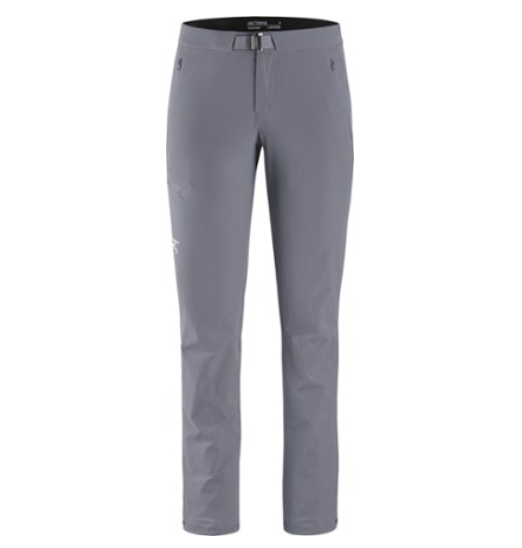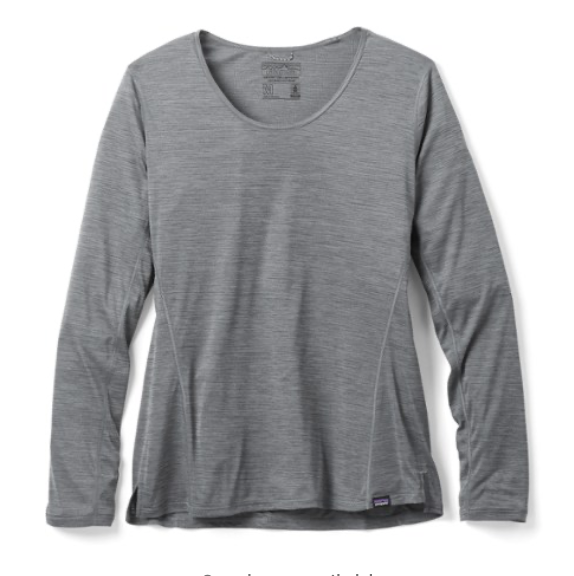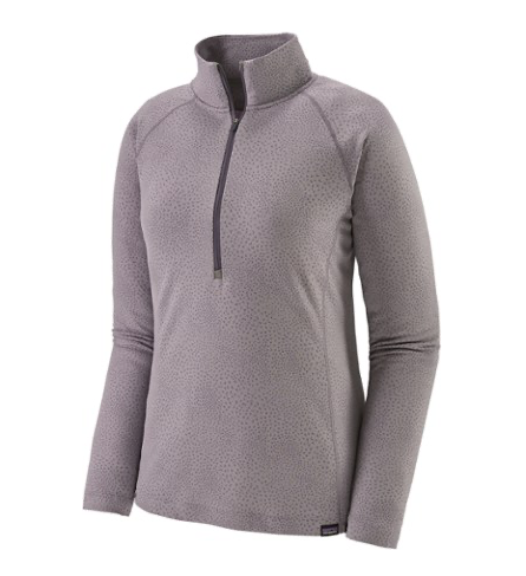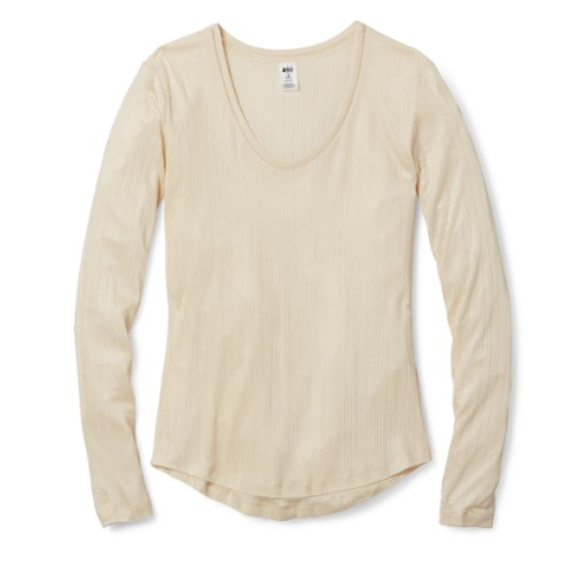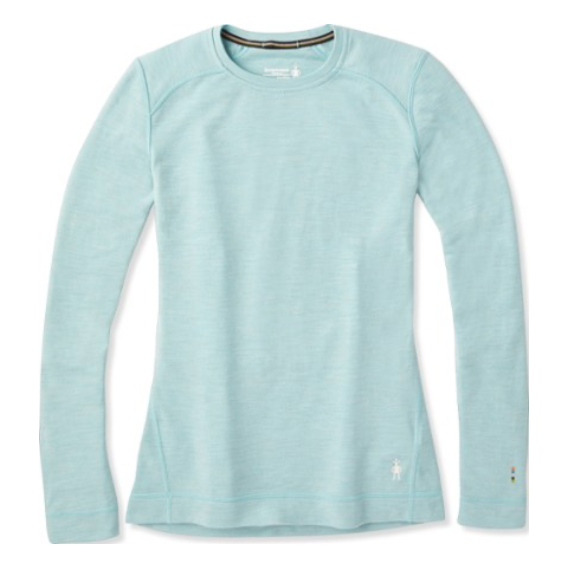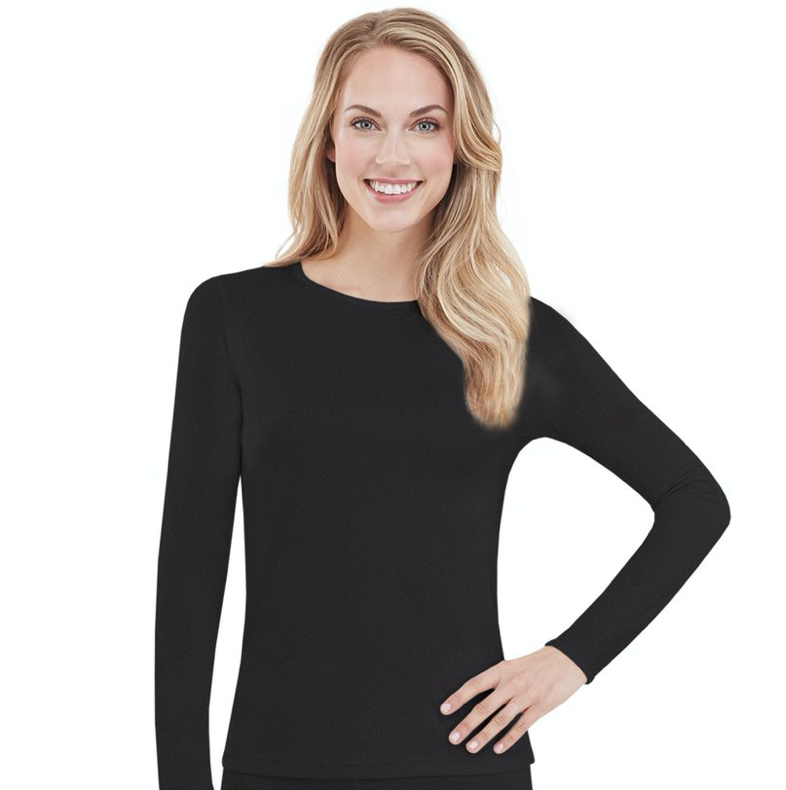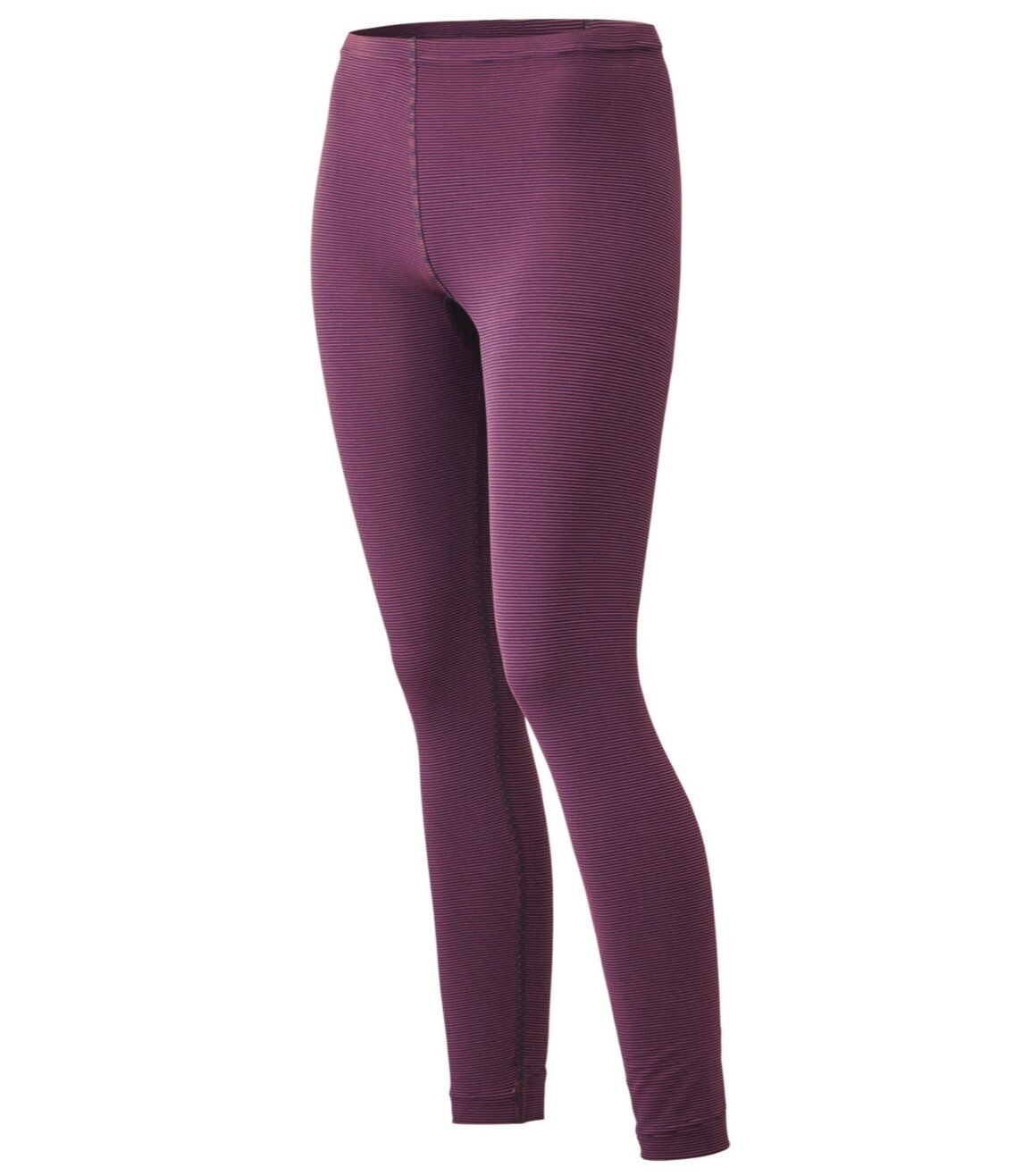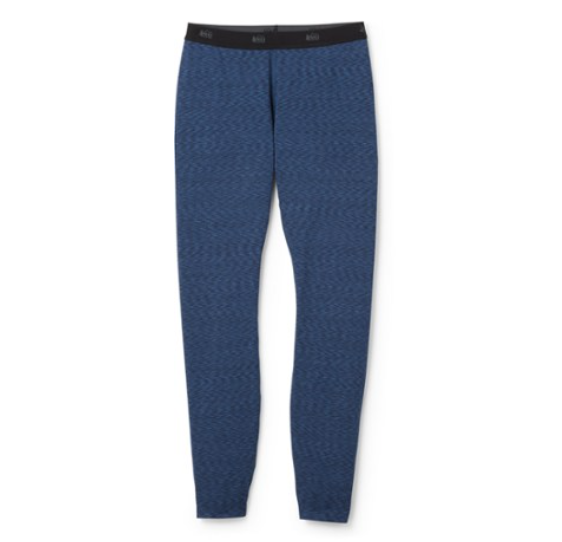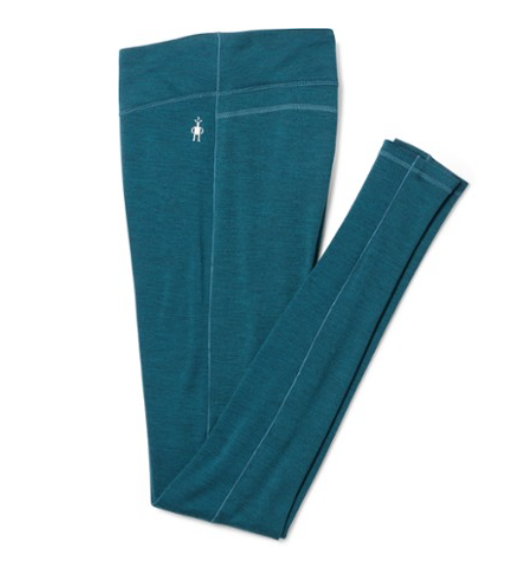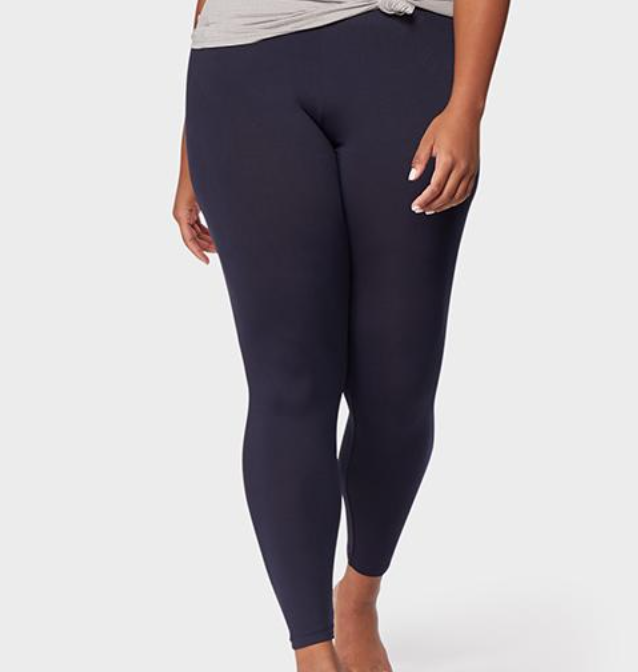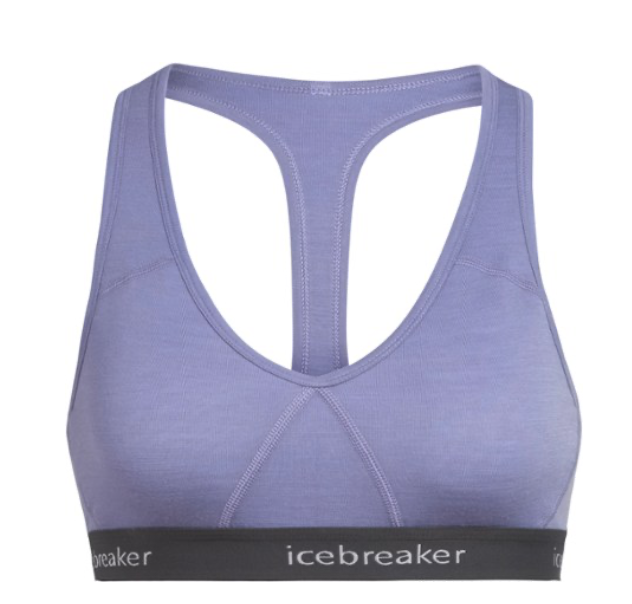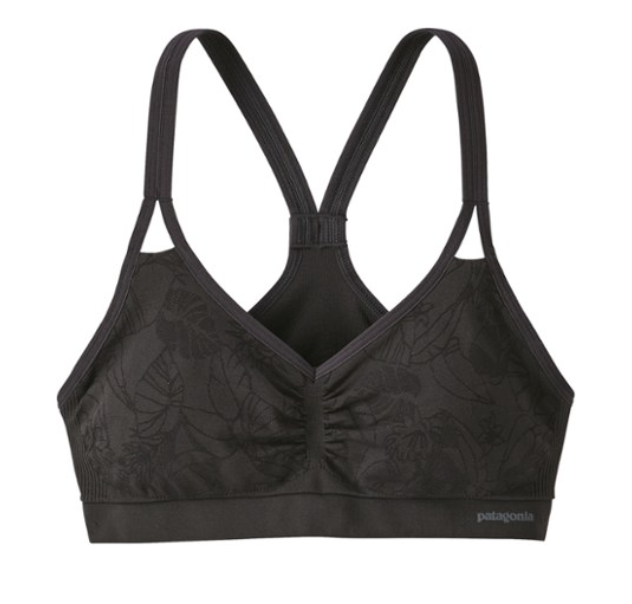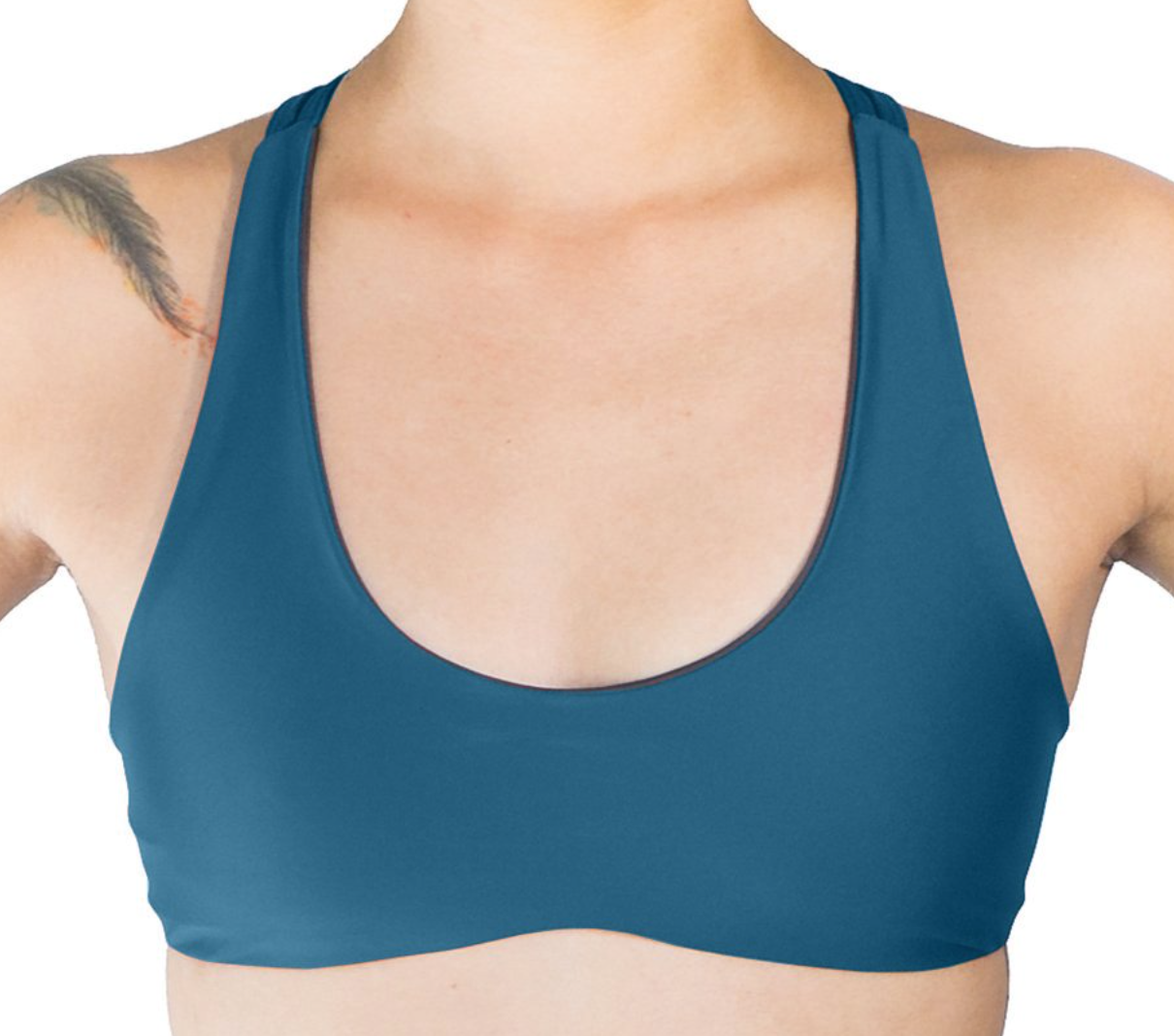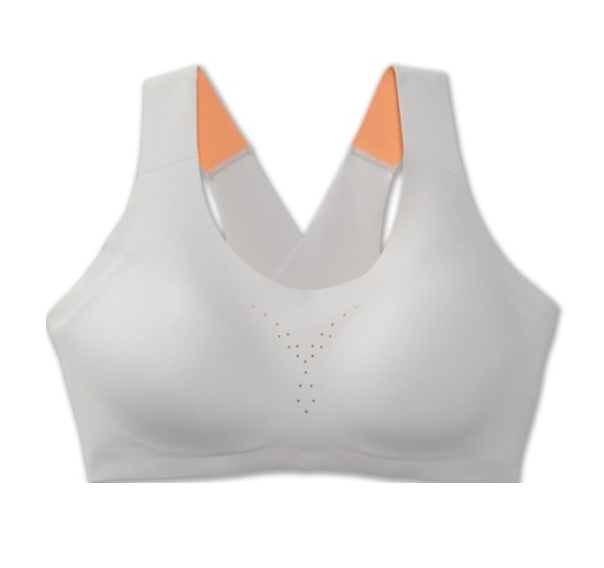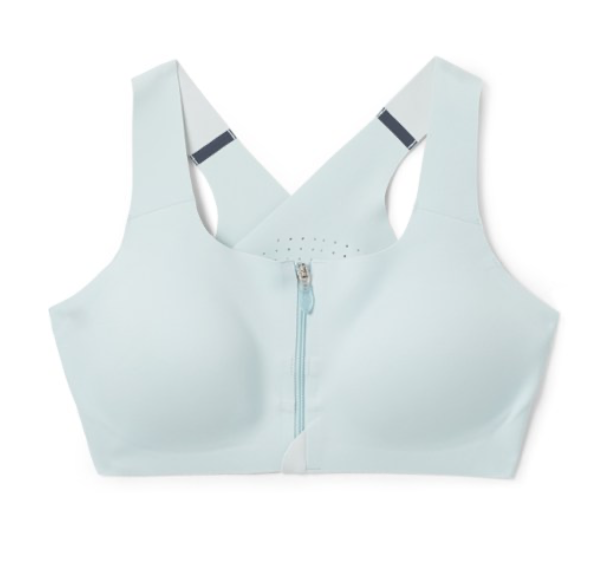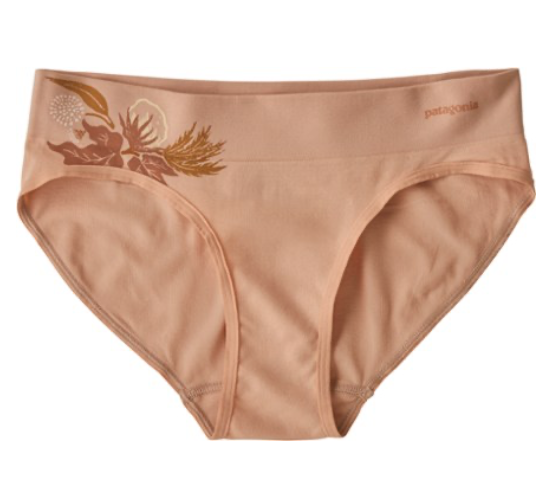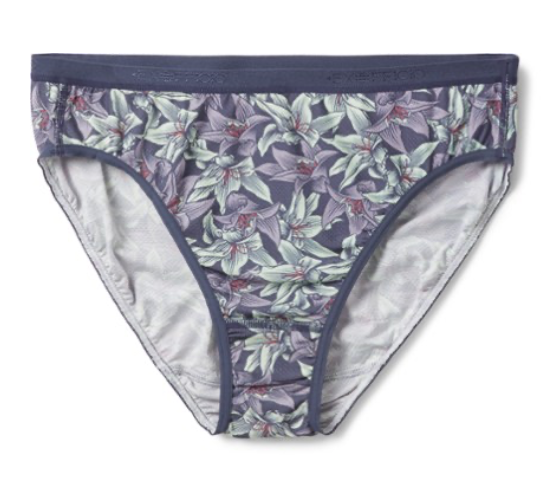How To Create the Perfect 3-Season Clothing System: Base Layers
Clothing can often be a forgotten gear system. Unlike a hiking backpack, most of us wear clothes every single day. We are so used to being clothed that sometimes we forget how important clothing is, especially when it comes to outdoor-specific clothing. And while clothing tech doesn’t seem as sexy as backpack, tent, and boot technology in the outdoor world, it can often be one of the most important systems in terms of your overall comfort on the trail.
In this how-to, I’ll be mainly focusing on a three-season layering system for spring, summer, and fall. This is part one of a four-part series. I’ll be focusing on base layers and women-specific under garments here. In the next installments, you’ll find insulating layers, shells, and additional accessories that make up a clothing system.
What Is A Clothing System?
A clothing system is a set of clothes that function together to do two main things: keep you dry and warm, and therefore, comfortable. Staying dry and warm are the two most important things when you are venturing outdoors, especially for extended periods of time, and they go hand-in-hand. Staying dry is important for preventing salt condensation, which is a main cause of chafing. It is also incredibly important for blister prevention on your feet, one of the most common causes of pain while hiking. Staying dry also plays an important part in staying warm. If you get wet - by your own sweat, or rain - and the temperature drops, you are putting yourself at risk for developing hypothermia if you cannot get your clothes to dry, or get out of wet clothes. Hypothermia is incredibly serious and can eventually lead to death, if not taken care of. And, you don’t need to be in sub-freezing temperatures to be at risk for hypothermia. Another important feature of outdoor clothing is protection against the sun to prevent sunburn, and possibly against bugs to prevent disease-carrying insects like mosquitos or ticks from biting you.
Stay Warm: To prevent hypothermia
Moisture-wicking, quick-drying clothing
Insulated clothing
Stay Dry: To prevent blisters, chafing, and salt condensation
Moisture-wicking, quick-drying clothing
Rain-protective clothing
Why is Moisture-Wicking Clothing in Both Categories?
Moisture-wicking clothing is extra important for staying dry and warm. I think this is best illustrated by a common example, one that I’m sure you’ve experienced before. Have you ever gone on a really difficult, strenuous, hot hike, where you know you’re sweating hard, and then you take off your backpack for a break, and a breeze comes along, and you get a chill on your back where your backpack just was? If you’re wearing sweat-wicking clothing, that big backpack-shaped sweat spot will dry up pretty quickly. Maybe within a couple of minutes, depending on the material. And when the next breeze blows through, you probably won’t feel that cool spot anymore. However, if you are wearing cotton, the classic anti-moisture-wicking fabric, that big backpack-shaped sweat spot is probably not going anywhere anytime soon, and most likely feels heavy, from all of the moisture it has absorbed, and clammy against your skin. Clothing that stays wet and doesn’t dry out quickly increases your risk for hypothermia, since a saturated, non-moisture-wicking shirt continues to lower your body temperature, and if the ambient temperature drops, or is already chilly, you’re going to get cold, fast.
What Makes Up a Clothing System?
Base Layers: These are the moisture-wicking layers we discussed above. Depending on the activity, they can be “long johns” or just a polyester t-shirt.
Insulating Layers: These are the layers that provide warmth. Depending on the activity, you’ll want a fleece, or a synthetic or down puffy. Sometimes you’ll want a combination of the options.
Shell Layers: This is the layer that keeps rain and wind off of you. Sometimes lighter weight wind layers can be sufficient, but in general, a good rain jacket should be in your arsenal for this layer.
Accessories: Socks, gloves, and hats can make or break your trip. They can provide warmth if needed, and a whole other set can prevent terrible sunburn.
Same trip, just days apart, drastically different conditions. This is why layering and having a full clothing system is important. I am wearing the clothes on the left under my insulated jacket and wind pants on the right. You’ll notice I also added gloves, and am wearing a beanie under my hood.
A Deeper Dive & My Top picks
Ok, we’ve discussed the basics of outdoor clothing and why it’s important, but let’s look a little closer at the different categories, why they’re important, and what makes up the category. I’ll include my “top picks” in 5 options:
Thru-Hiking - emphasizing lightest weight but also durability to last for thousands of miles,
All-Around - for those who want one item to do it all for all seasons,
Warm Weather - for summer, and people who consider themselves warm-natured,
Cool Weather - for shoulder seasons, high elevations, and people who consider themselves cold-natured, and
Budget - under $50-100/ item.
Some categories will not have all of these options. As an ultralight hiker, I’ll be selecting items that overall, are lightweight and still highly functional, as I believe lowering your pack weight is a key to enjoying backpacking. Clothing is also an area where people tend to overpack and can really rack up the pounds in their pack. Also, I’m a woman, so this post will be biased towards women’s-specific clothing and needs. Sorry, guys! Lucky for you, everything they make for women is also available for men, except for bras. And ladies - I’ve done my best to add plus size & extended lengths clothing options in here for you! I know this is a shortcoming of the clothing industry, and I experience it every day at work.
Base Layers
Base layers seem to cause some confusion. Are they long johns? Are they thermals? What’s the difference?! Base layers are the moisture-wicking layers we talked about above. They are simply the first layer you wear. On nice days, they’re probably the only thing you are wearing. Long johns/ thermals are a bit of an “older” name for them, and you mostly hear people referring to skiing base layers or sleeping layers as long johns or thermals. Those names imply that they are warmer than summer base layers, but really, they’re all interchangeable names. Base layers also aren’t necessarily the long sleeve and legging combinations that you always see, but certainly can be. It really just depends on use. Remember, we’re focusing on a three-season system, so I am not going to discuss skiing/ snow base layers.
For general backpacking, I always recommend having one set (1 top, 1 bottom) of hiking base layers and one set of sleeping base layers.
Base layers generally come in three different materials: Synthetic, Merino Wool, and Silk.
Synthetics are great at quickly wicking moisture and drying. They are also the most durable of the bunch, and best for wearing under a backpack over the long run. Their downfall? They can get incredibly stinky. Some brands will put silver or polygiene in their synthetics to keep them less stinky, but they’re not going to work as well as merino wool. Synthetics come in lightweight - heavyweight options, and are usually polyester, sometimes blended with rayon and spandex.
Merino Wool is also great at wicking sweat, but not as great at drying quickly as synthetics. Merino wool does have a leg up on synthetics in terms of overall body temperature regulation, though. When the wool fibers wick sweat, they hold onto moisture longer in their core, which is why they don’t dry as fast. But when the fibers heat up, by the ambient air temperatures, or your body heat, they can release that moisture, having a cooling effect. Merino wool is not as durable as synthetics, but more and more brands are using core-spun technology to put synthetic fibers on the inside of the wool strands, increasing durability and drying time of the garment. Where merino wool really shines is its ability to stave off stink. Now, this is not when you’re actively sweating. But if you do a work out in a merino top, let it air out overnight, and sniff the pits the next morning, it doesn’t reek with your stench. I didn’t believe it until I tried it. But it really works, people! Merino wool layers also come in lightweight - heavyweight options.
Silk is just average at a lot of things. It doesn’t wick sweat as well as synthetics or merino, it’s less durable than them, and it doesn’t hold up to stench like merino does. Why use it? For starters, it’s superlightweight, and some people really like it as a true undershirt, and others like to sleep in it because of its silky feel.
Click here fo an in-depth read on types of base layer fabrics from Montbell
Day Time & Active: These base layers are my top picks for when you are being active and moving, and probably generating lots of sweat. You only need to take one set (1 top, 1 bottom) of active layers per backpacking trip.
Tops
Thru-Hiking: REI Co-op Sahara Long-Sleeve Shirt (also comes in short sleeve)
Synthetic, UPF 35, nice underarm venting, can roll sleeves up into a half-sleeve, pop-up collar keeps sun off neck, fully button-down front allows for major venting.
Pockets are nice to have on a shirt while thru-hiking & in town, eyeglass hanging loop is nice touch.
All-Around: Arc’teryx Remige Hoody
Synthetic, UPF 50, hood allows for greater sun protection and doesn’t sag, neckline doesn’t feel restrictive.
I’ve worn this in warm weather and while snow camping. It is fabulous at regulating temperature and fits really well.
Warm Weather: Patagonia Capilene Cool Daily Long-Sleeve Shirt (also comes in short sleeve)
Synthetic, UPF 50, super quick drying, very lightweight.
One of my favorite tops, fits and feels really good. Also works as a rashguard in the water.
Cool Weather: Smartwool Intraknit Merino 200 Crew Base Layer Top
A merino/ polyester blend with gender-specific body mapping zones to enhance moisture-wicking capabilities more than a solid merino layer. The added polyester will also enhance the durability of the garment.
Not the warmest merino layer, but not the coolest, either.
Budget: 32degrees Cool Fitted T-Shirt
Synthetic, can find at Costco as well.
Bottoms
Thru-Hiking: Patagonia Strider Shorts
Very quick drying, wide leg opening, wide, comfortable waistband. Treated with DWR.
Has a back waistband pocket that doesn’t rub under a backpack and is nice to have in town.
All-Around: REI Co-op Sahara Convertible Pants
Pants? Check. Shorts? Check. Pockets? Check. Belt? Check. These pants can basically do anything. They’re also quick-drying, UPF 50, and are treated with DWR. The only downside? They run a little small, so be sure to size up.
Comes in Petite, Regular, Tall and Plus sizes!
Warm Weather: REI Co-op Savanna Trails Pant
Even lighter weight than the Sahara pants, and super breathable and sweat wicking. Articulated knees give a little extra moving room, and the bungee drawstring at the ankle allows you to transform them into capris. They are UPF 50 and treated with DWR. The pockets on these pants are very generous as well!
Comes in Petite, Regular, Tall, and Plus sizes!
Cool Weather: Arc’teryx Gamma LT Pant
While actually a soft-shell pant, these are great from cooler weather hiking to winter snowshoeing, and even summer summit attempts! Brushed interior and reinforced hems. Treated with DWR to shed moisture. Make sure to size up if wanting to wear tights underneath for winter activities.
Comes in select petite and tall sizes.
Budget: Target Mid-Rise Run Shorts 3” - All In Motion
Lightweight, moisture wicking, with a loose fit, built-in briefs, and drawstring waist! Plus, they’re 100% recycled polyester.
Night Time & Sedentary: These are for sleeping in, assuming you have an appropriately-rated sleeping bag and pad. You only need to take one set (1 top, 1 bottom) of sleeping base layers per trip. Some hikers in summer conditions might not even bring a separate set of sleeping clothes.
Tops
Thru-Hiking: Patagonia Capilene Cool Lightweight Long-Sleeve Shirt
My favorite top to tote around. It has an average weight of 3 oz, and feels supple on the skin. I rarely get cold or over-heated with this top on while sleeping. And in a pinch, it still works great to hike in.
All-Around: Patagonia Capilene Midnight Zip-Neck Base Layer Top
A little warmer than the Lightweight version, but still super breathable. It is 6 oz and super versatile: use it to sleep in or to hike in. With the zip-neck, you can regulate your temperature a little more if you end up needing to hike in this in warmer weather, or if the nighttime temps aren’t as cold as you thought it would be. Also comes in a crew if you don’t like zippers.
Warm Weather: REI Co-op Silk V-Neck Shirt
The silk top is the lightest and least warm out of all the options on this list. But if you’re a warm sleeper, and don’t want to have heavy clothes in your pack, these should be your go-to. Downside? Not super versatile. They’re a little delicate, so wouldn’t be able to stand-in as a hiking shirt, if needed.
Cool Weather: Smartwool Merino 250 Base Layer Crew Top
One of the warmest tops I own and still, I don’t get super over-heated. Its soft and fits really nicely. I wear it to sleep in while snow camping, but if you are a very cold natured person, you’ll appreciate this top year-round. If you must hike in it, it can do the job, but remember: merino wool is more delicate than synthetics.
Budget: Cuddl Duds Climatesmart Long Sleeve Crew
I have no personal experience with these, but I’ve heard nothing but great things from others. 100% polyester.
Bottoms
Thru-Hiking: Montbell Light Trail Tights
Super lightweight, at only 3.2 oz average. These are synthetic, and could easily double as a morning or evening hiking layer if it is cold. Beware: these are “Asian Fit” so you may need to size up. These will also fit more like leggings than base layer bottoms, which are usually a little baggier.
All-Around: REI Co-op Midnight Base Layer Tights
Not as light as the Montbell tights or silk bottoms, but it is also slightly warmer. Like the above “all-around” options, this is going to be the layer you want if you only wanted to have one base layer, from skiing in the winter to backpacking in the summer. If you know you are a warm-natured person, but still want a versatile bottom, you’ll want to go for the “lightweight” option.
Warm Weather: REI Co-op Silk Bottoms
Weighing about 3.1 oz on average, these are barely-there and great for warm weather sleeping. As with the top, silk is very delicate and shouldn’t be worn as a top layer while hiking.
Cool Weather: Smartwool Merino 250 Base Layer Bottoms
These are my go-to base layer bottoms for all of my winter activities: snow camping to cross country skiing to downhill skiing! They are thick and give my legs a nice held-in feeling, which is nice when I’m doing an activity with only a shell layer on top, but they don’t feel constricting to sleep in. If you’re a cold-natured person, these could be great for you, even in summer.
Budget: 32degrees Lightweight Base Layer Leggings
Lightweight and synthetic. A little see-through though.
Can be found at Costco in a set with top & bottom. I am unable to find this set on either website, but they exist! They usually come out every winter in the seasonal clothing section.
Underwear: You know, for wearing under your clothes! You only need one bra per backpacking trip. I only bring one pair of underwear on solo trips, and 2 pairs of underwear on trips where I am sharing a tent (to be a nice tent partner and reduce stink).
I’m not going to adhere to my “5 categories” here. Most ladies already know what they like, in terms of active undergarments. But, I’m going to give a few suggestions if you’re looking to switch it up.
Bras
Hiking is not a high-impact activity, so these bras aren’t focused on being extremely supportive, but I have added a couple of supportive bras that are good enough for running as well. You’ll notice a common feature that all of these bras have: no plastic adjustments on the shoulder straps. Plastic rings tend to rub against backpack straps and cause discomfort and possibly even chafing and blistering. We don’t want that while we’re hiking!
Icebreaker Sprite: This is a merino wool bra, blended with nylon to increase durability. The racerback is very narrow and minimal, great for breathability and comfort, not the best for support. This is probably the least supportive bra of the group. I owned this bra at one point, but it did not provide enough coverage on my side-boob for me. Even though it goes up to an XL, I would say this bra is really for AA-C cups. If you are sensitive to merino wool, this is not the bra for you! But, for those who want a natural fiber, it is a popular choice, and I find it to be less itchy than smartwool styles.
Patagonia Barely: A low-impact pull-over bra with removable padding. I was hesitant to make the switch to this bra from the older version of the Patagonia Active Mesh bra (with wide straps), but I have found this one to actually be more comfortable and still supportive enough for hiking! This is a nylon/ elastane blend and best for A-C cups. I am currently a 38 C/ 36 D and wear an XL.
Têra Kaîa Toura: This is the only bra in the line-up that I have no personal experience with, but I know lots of outdoor ladies that love this bra (maybe I’ll have to finally try it)! It comes in two styles: Low cut for small-chested ladies (A-C cup) and low impact activity, and the high cut for larger chested ladies (C-DD cup) and low-mild impact activity. The unique thing about this bra that sets it apart from all the others: it is salt & chlorine resistant, so it can be used for swimming. It dries super fast, making it a great choice for ladies who like to swim in those backcountry lakes!
Brooks Dare Crossback: I am so impressed by Brook’s new run bra line. You would never see me promoting Brooks bras before their new “Dare” collection because I despised them! These new ones are great though, and I’ve had the opportunity to run in them. There is no removable padding in these bras, but the cups are slightly padded for privacy. There is NO underwire in these. And there is lots of venting in the chest and back, and the back cross straps are not a racerback, but a wide cross-over, which for me, puts less strain on my shoulders and neck. This bra is great for A-D cups, but because they are sized as combo cup sizes (A/B, C/D), you may need to try a couple of band sizes on. The representative I spoke with said to size up if in doubt. For instance, I am between a 38C and 36D, and I went for the 38 C/D.
Brooks Dare Zip: Basically everything I said above about the Dare Crossback applies here as well. This bra however, is good for people with shoulder problems or just hate pulling a bra over their head to put on/ take off. The inner clasp has a low profile, unlike the Victoria’s Secret high-impact bras, and the zipper is a locking zipper. This means that when the zipper is in the “down” position, it is impossible to unzip it! Pretty cool. Unfortunately, this is only available in C/D cup sizes, but from the Brooks representative’s mouth: “Brooks understands that extended sizing is necessary”. Basically, they’re working on it. And they intend to make other lines of their Dare collection in the future.
Underwear
When looking for hiking/ backpacking underwear, we really want to focus on a few things: staying in place, moisture-wicking, stink-resistant, chafe-free, and quick-drying. All of the panties I’m talking about come in a variety of cuts, which I’ll highlight below.
Icebreaker Siren: My personal favorite out of all the options. These are merino wool based, with a small amount of nylon added for durability. These are the least durable of the bunch, and you should be laundering them appropriately. They are absolutely incredible though. Definitely less smelly after a day of hiking than the synthetic options (even the anti-odor ones!), and so comfortable. These don’t ride up or shift around, and the seams don’t chafe. The wool also does not feel like wool, and they’re very breathable. I used one pair on my entire PCT hike, and there were holes at the seam in the crotch, but wearing one pair of panties everyday for 5 months will test them. I never got a yeast infection or UTI. The anti-microbial properties are amazing! These guys are the most expensive on the list, but Icebreaker has a decent warranty if something happens to them within a year of purchase.
REI Co-op Active Brief: REI’s answer to ExOfficio underwear. These are so light and supple, you can barely tell you’re wearing them. They’re quick-drying as well and come in all four popular cuts: thong, bikini, hipster, and full brief.
Patagonia Active Hipster: Patagonia uses their Polygiene odor control treatment to inhibit bacterial growth. These are very soft and pretty breathable. I like the Active style better than the “barely” style in the underwear because I think it stays in place better and dries a little faster. You can get these in the hipster and brief styles.
ExOfficio Give-and-Go 2.0 Bikini Briefs: ExOfficio has made a name for themselves in incredibly quick-drying and breathable underwear. Known for being the ultimate travel underwear, they’re also great for hiking in. They have odor control treatment in every pair. These come in a full-cut brief and a bikini brief. If you prefer a hipster, look into their sport mesh line. Their sport mesh line is a slightly lower cut, however.
Questions, comments, or concerns? Let me know below!
